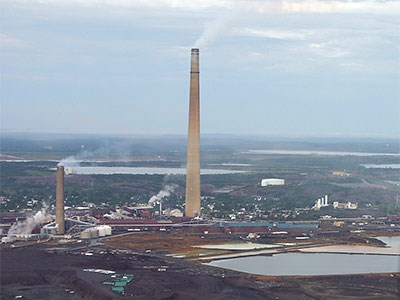Vale's holdings in Sudbury could be on the selling block.
A story in the Globe and Mail on Feb. 25 that said the company is seeking to raise $10 billion in the next 18 months.
“Chief Executive Murilo Ferreira said on a conference call there were 'no restrictions' on what the company would consider selling in order to reduce net debt to $15-billion as it looks to protect itself against a possible further deterioration in iron ore and nickel prices,” the story said.
The company did not say how much it was looking to get for certain assets, or how close it was to doing a sale.
The Brazilian mining giant reported a loss of US$12.1 billion for all of 2015, the company reported Feb.25, pointing the finger at plummeting commodity prices and the soaring value of the U.S. dollar. That includes a loss of US$8.57 billion in the final quarter of last year.
Luciano Siani Pires, Vale's executive director of finance and investor relations, said in a video that iron ore prices were down 43 per cent, nickel was down 30 per cent and copper 20 per cent in 2015.
"The severe decline in commodity prices," was responsible for $9.4 billion of the loss, Pires said in the video.
Lower metals prices combined with a 47 per cent increase in the value of the U.S. dollar compared to the Brazilian rial. That hit the company hard, Pires said, because most of Vale's debt is in American funds, so an increase in the value of the dollar increases the value of debt.
On the positive side, Vales was able to reduce operating costs by more than $5.9 billion, Pires said. And the company was still able to invest $8.4 billion last year and generate significant cash flow for its operations.
In Sudbury, the plunging value of the loonie compared to the U.S. dollar helped Vale cut costs significantly.
“After adjusting for the effects of higher sales volumes (US$ 168 million) and exchange rate variations (-US$ 30 million), costs decreased by US$ 45 million (versus the third quarter of 2015), mainly due to the higher dilution of fixed costs in Sudbury (US$ 42 million).”




